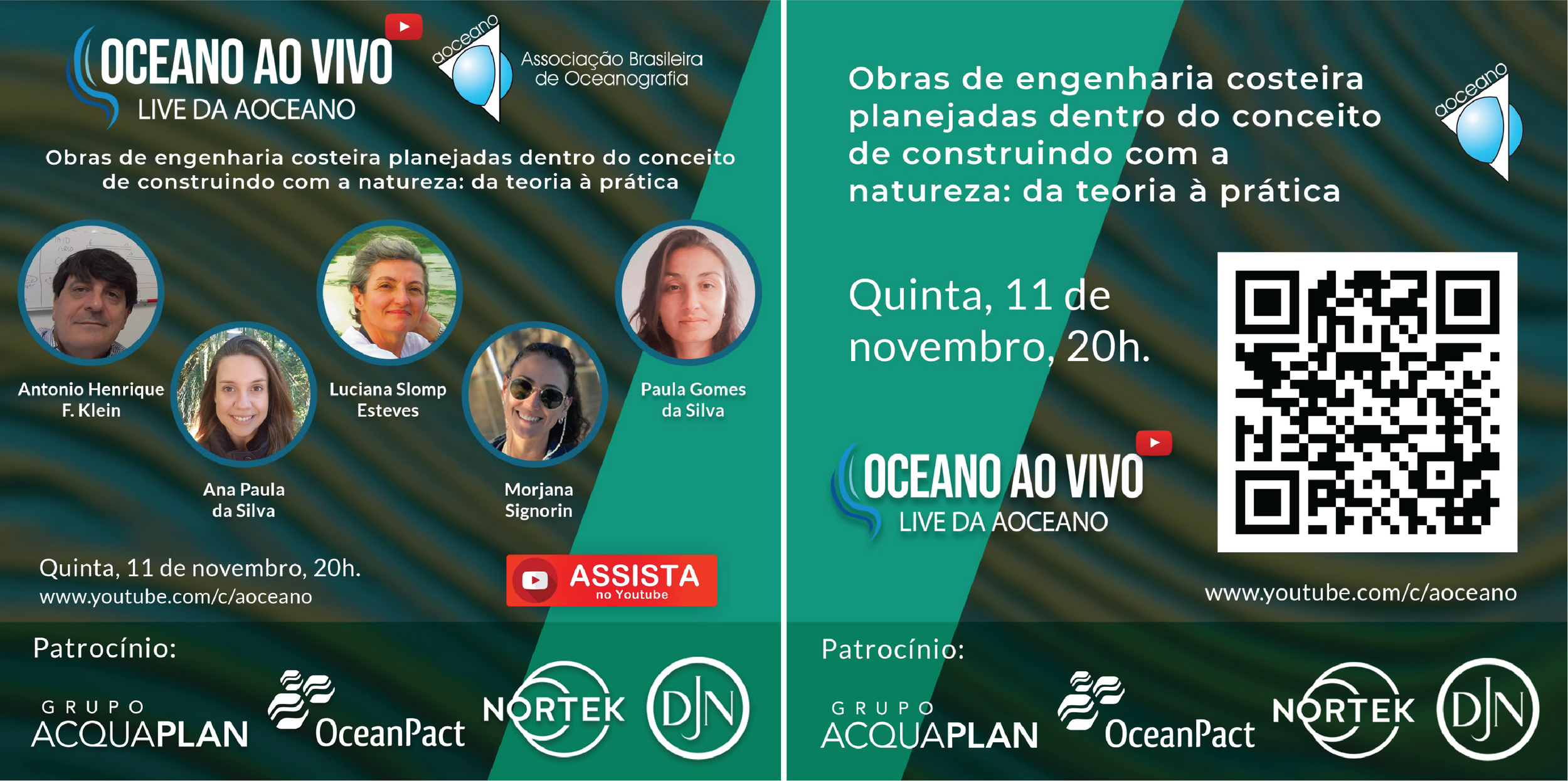
“Science isn’t finished until it’s communicated.”
Mark Walport
The Neck, Tasmania - Australia
Skype a Scientist


LIVE:
Obras de Engenharia Costeira Planejadas dentro do Conceito de Construindo com a Natureza: da Teoria à Prática
Language: Portuguese.
In this Live organized by the “AOceano Brasil”, Prof. Antonio Klein interviews a group of women oceanographers about coastal engineering strategies that follow the concepts of Building with Nature and Nature-Based Solutions.
November 11th, 2021
3MT: The Sand Highway
"The Sand Highway" is a presentation for the 3 Minutes Thesis Competition 2021 at Griffith University (Queensland, Australia).
In this video, I present briefly my Ph.D. research about wave climate and atmospheric patterns influencing the sand migration around a headland, a process known as Headland Bypassing.
The presentation script is as follows: "Have you ever sat down on a beach and wondered how did all this sand get here? To answer this question, I want you to imagine that along the coast the sandbars form a highway in which hundreds of thousands of metres cubic of sand are transported every year. Along this highway, structures such as this rocky headland here act basically like traffic lights. The switch between the green and the red lights depends on the wave condition approaching the coast. In other words, the wave conditions can either support the sand movement from one side of the headland to the other or can cause sand to accumulate on one side while the next beach erodes away. So, there comes the problem: the variability of the wave conditions is influenced by regional weather systems and by larger-scale climate systems like El Nino, La Nina, and even global climate change. Given this, my research is focused on investigating how climate and atmospheric systems interfere in the process of sand migration from one beach to another. For that, we have chosen this study area in Northern New South Wales on the East Coast of Australia. Here we have collected measurements of the beach shape and combined them with over 30 years of satellite images in order to detect the frequency of occurrence of the sand movement. Computer simulations of different wave conditions driving the sand migration are also applied in order to describe the process in detail and then connect with the climate systems that generate the different wave types. So far, results have shown that sand migration around this headland occurs in a seasonal manner and can take from 6 months to a year to be completed. The occurrence of high wave energy usually caused by storm events has been observed to support sand transport. Also, multiple years of La Nina were related to reduced sand migration and considerable erosion. From there, my research has the potential to inform coastal managers on the planning of adaptation strategies to preserve the beach ecosystems under the predictions of periods with reduced sand volume arriving. After all, over 50% of the world’s population live in the coastal zone and a large part of the coastal cities’ tourism income is related to their beaches…and yet every year beach erosion makes the news as many coastal cities are not prepared or fully understanding the processes that are governing the sand balance of their beaches. Now, next time you go to the beach you can look around and remember: all this sand around me has come a long way to finally be here, and it might not be the last stop."
LIVE:
Caminhos da Ciência
Language: Portuguese.
In this Live organized by the “Ecoando Sustentabilidade”, Prof. Alessandra Fonseca talks to me about the oceanography career pathways and how it has been for me moving through academia from Bachelor to Master to Ph.D. degree.
June 10th, 2020


